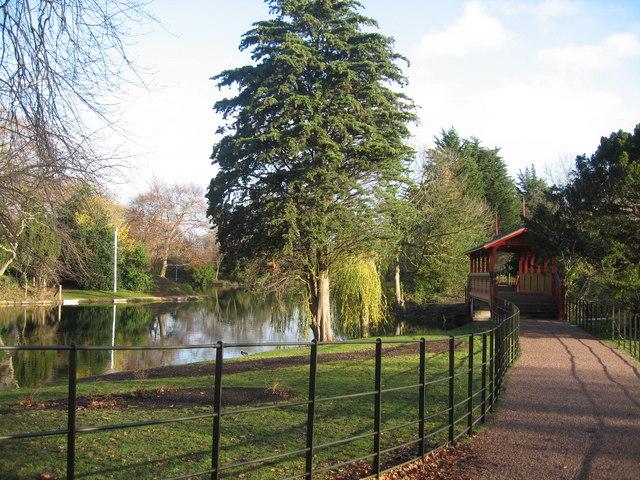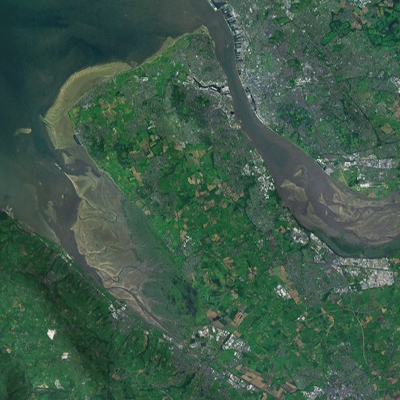|
Birkenhead Corporation Tramways
Birkenhead Corporation Tramways operated a tramway service in Birkenhead between 1901 and 1937. History In 1860, Birkenhead started the first street tramway in Britain, shortly before London. The Birkenhead Corporation Tramway company was formed through the acquisition of the Birkenhead United Tramways, Omnibus and Carriage Company (known as Birkenhead Street Railway Company Limited 1860-1877, Birkenhead Tramways Company 1877-1890) on 31 December 1900, and the Wirral Tramway Company on 8 May 1901, and the Birkenhead United Tramways Company on 24 January 1901. Electrification of the system was undertaken and 44 tramcars were ordered from G.F. Milnes & Co. and built locally in their factory at Birkenhead. Services started on 4 February 1901. Closure The first closure was on 30 August 1925, when the Claughton Road route was converted to bus operation. The remaining routes were closed over successive years until the system finally closed on 17 July 1937. Car No 7 is preser ... [...More Info...] [...Related Items...] OR: [Wikipedia] [Google] [Baidu] |
Birkenhead
Birkenhead (; cy, Penbedw) is a town in the Metropolitan Borough of Wirral, Merseyside, England; Historic counties of England, historically, it was part of Cheshire until 1974. The town is on the Wirral Peninsula, along the south bank of the River Mersey, opposite Liverpool. At the 2011 census, it had a population of 88,818. Birkenhead Priory and the Mersey Ferry were established in the 12th century. In the 19th century, Birkenhead expanded greatly as a consequence of the Industrial Revolution. Birkenhead Park and Hamilton Square were laid out as well as the first street tramway in Britain. The Mersey Railway connected Birkenhead and Liverpool with the world's first tunnel beneath a tidal estuary; the shipbuilding firm Cammell Laird and a Great Float, seaport were established. In the second half of the 20th century, the town suffered a significant period of decline, with Containerization, containerisation causing a reduction in port activity. The Wirral Waters development is p ... [...More Info...] [...Related Items...] OR: [Wikipedia] [Google] [Baidu] |
Wirral Peninsula
Wirral (; ), known locally as The Wirral, is a peninsula in North West England. The roughly rectangular peninsula is about long and wide and is bounded by the River Dee to the west (forming the boundary with Wales), the River Mersey to the east, and the Irish Sea to the north. Historically, the Wirral was wholly in Cheshire; in the Domesday Book, its border with the rest of the county was placed at "two arrow falls from Chester city walls". However, since the Local Government Act 1972, only the southern third has been in Cheshire, with almost all the rest lying in the Metropolitan Borough of Wirral, Merseyside. An area of saltmarsh to the south-west of the peninsula lies in the Welsh county of Flintshire. The most extensive urban development is on the eastern side of the peninsula. The Wirral contains both affluent and deprived areas, with affluent areas largely in the west, south and north of the peninsula, and deprived areas concentrated in the east, especially Birkenh ... [...More Info...] [...Related Items...] OR: [Wikipedia] [Google] [Baidu] |
Birkenhead - Old Tram At Mersey Ferry Terminal - Geograph
Birkenhead (; cy, Penbedw) is a town in the Metropolitan Borough of Wirral, Merseyside, England; historically, it was part of Cheshire until 1974. The town is on the Wirral Peninsula, along the south bank of the River Mersey, opposite Liverpool. At the 2011 census, it had a population of 88,818. Birkenhead Priory and the Mersey Ferry were established in the 12th century. In the 19th century, Birkenhead expanded greatly as a consequence of the Industrial Revolution. Birkenhead Park and Hamilton Square were laid out as well as the first street tramway in Britain. The Mersey Railway connected Birkenhead and Liverpool with the world's first tunnel beneath a tidal estuary; the shipbuilding firm Cammell Laird and a seaport were established. In the second half of the 20th century, the town suffered a significant period of decline, with containerisation causing a reduction in port activity. The Wirral Waters development is planned to regenerate much of the dockland. Toponymy The nam ... [...More Info...] [...Related Items...] OR: [Wikipedia] [Google] [Baidu] |
Wirral Tramway
Wirral Tramway is a heritage tramway opened in 1995 by the Wirral Borough Council and Hamilton Quarter partnership and was operated by Blackpool Transport Services until 2005 when the council took over the licence to run the tramway. The Wirral Transport Museum and tramway were set up with the assistance of The Hamilton Quarter and various volunteer groups including Merseyside Tramway Preservation Society, 201 Bus Group and the Merseyside Bus Club. At present, the service operates on Saturday and Sunday afternoons, plus school holidays. In recent years Wirral Council have sought a new owner with the funds to develop the tramway further and talks are in progress with possible new owners. In the future, there may be extensions to the centre of Birkenhead, Seacombe, as well as certain railway stations. History Construction of the tramway was authorised by the Wirral Tramway Light Railway Order 1994, obtained by Wirral Borough Council. When the line opened on 14 April 19 ... [...More Info...] [...Related Items...] OR: [Wikipedia] [Google] [Baidu] |
Historic Transport In Merseyside
History (derived ) is the systematic study and the documentation of the human activity. The time period of event before the invention of writing systems is considered prehistory Prehistory, also known as pre-literary history, is the period of human history between the use of the first stone tools by hominins 3.3 million years ago and the beginning of recorded history with the invention of writing systems. The use .... "History" is an umbrella term comprising past events as well as the memory, discovery, collection, organization, presentation, and interpretation of these events. Historians seek knowledge of the past using historical sources such as written documents, oral accounts, art and material artifacts, and ecological markers. History is not complete and still has debatable mysteries. History is also an Discipline (academia), academic discipline which uses narrative to describe, examine, question, and analyze past events, and investigate their patterns of ca ... [...More Info...] [...Related Items...] OR: [Wikipedia] [Google] [Baidu] |





.jpg)